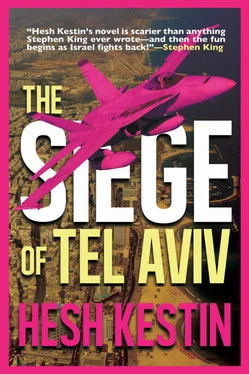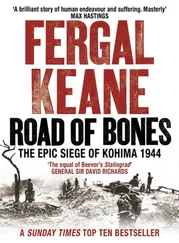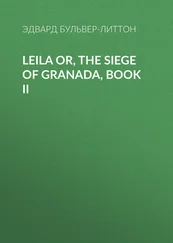[7] After fulfilling their primary missions, two hundred tanks, among them Cobi’s, are detached from the main force to make straight for Jerusalem. Here there is resistance from Jordan’s disciplined Arab Legionnaires, some under British officers. But blessed with intimate knowledge of the capital, the Jewish tankists carve Jerusalem into segments, liberating one neighborhood after another. By day’s end most of the Legionnaires surrender, the remainder fleeing east across the nearly dry Jordan.
The Old City is left for last. It proves no challenge. Not only have its defenders melted away, but the entire population of the Muslim Quarter has decamped as well. The ancient Jewish, Christian, and Armenian Quarters are of course empty, their houses having been reserved for later use by Jordanian government officials. Like the rest of Jerusalem, the Old City is empty.
Within its walls, six major churches are found destroyed, including the Church of the Holy Sepulchre, along with a dozen monasteries and nunneries. Most synagogues have been used as toilets. The single exception to the destruction of non-Muslim holy sites are Russian Orthodox churches, a concession to Moscow for providing intelligence and logistical support, to say nothing of its role in the Security Council, where it vetoed even minimal efforts to succor the population of Tel Aviv and provide food and water to Israeli prisoners of war.
The Western Wall of the Second Temple, Judaism’s most holy site, is found to be demolished. Its massive rectangular stones, one measuring forty-one by eleven by eleven feet, are strewn like children’s blocks about the plaza where Jews of all persuasions, from ultra-Orthodox to Reform, prayed since the Old City’s liberation from Jordanian rule in the Six Day War of 1967.
At the sight of this wanton destruction, IDF discipline, which has held through the entire day, breaks down.
The first tank to reach what is left of the wall is commanded by an Orthodox Jew whose family, of Yemenite origin, has lived in Jerusalem since the fifteenth century. The second tank is commanded by the son of a paratrooper who died in the Israeli conquest of the Old City in 1967. No record of any communication exists between the two—at the subsequent court martial, their actions that day are termed “autonomic and unplanned.”
But only seconds after the two tanks arrive at the rubble that was the wall, they climb together to the plateau known to the Muslim world as the Noble Sanctuary, a flat plaza built over the ruins of the Holy Temple itself.
The first tank levels its 1200mm gun at the Dome of the Rock, not truly a mosque in that none worship there, but a shrine, and at point-blank range destroys it. The second tank joins in. In a matter of seconds, what is normally referred to as Islam’s third holiest site is flattened, a cloud of dust rising above what were once walls of brightly colored hand-painted ceramic tile, the blue, green, violet, and yellow of its façade rising with the red and yellow of the interior, all of it tinged with a corona of gold dust from the dome.
As the two tanks swivel toward the second structure of the Noble Sanctuary, the Mosque of Omar, General Ido’s command tank moves up to insert itself between the two Chariots and the mosque.
The words he uses as he opens communications are by now among the war’s most quoted, less a military order than a spiritual aspiration: “Enough! Remember before Whom you stand.”
WITH BEN GURION INTERNATIONAL Airport opened again, Connie Blunt is more than aware her unique situation as the only Western television correspondent is about to end. Unfortunately, when she arrives in Israel with El Al 201 her satellite phone is seized, along with the digital footage from the raid on Kuwait.
Even in time of war, IDF military censorship moves quickly, but this is no ordinary war. No one she speaks to can even speculate where her precious footage and satellite phone have been sent. And she has no way to get around. There are military vehicles on the roads, but few are heading to Tel Aviv. In the massive mobilization taking place, no one has time to worry about a blond correspondent complaining that her equipment has been stolen.
By great good fortune, a civilian taxi shows up at the airport—where the driver acquired gasoline is anyone’s guess—and for a small fortune, its driver agrees to provide transportation to Tel Aviv. Connie, Terry Santiago her producer, and her ever-capable cameraman Buddy Walsh pile in.
With a tiny digital video camera he held in reserve, through the taxi window Walsh is able to record the rebirth of an entire city, an entire nation really. To save precious pixels, the record of their journey into Tel Aviv is shot in black and white, and to this day remains the only documentary evidence of the first hours of Israel’s redemption.
At first their driver takes them to IDF headquarters in the Kirya. This is a dead end in every sense of the term: it is leveled.
Then the driver, who has driven foreign press before, thinks to bring them to Sokolov House, home of Israel’s Journalists Association, where before the war editors and reporters from the Hebrew dailies hung out in the small café on the ground floor. Amazingly, Blunt finds the café functioning—after a fashion: there is no whiskey or beer, nor coffee, but with water now available, it is possible to brew tea. The place seems to have regained its attraction for Israel’s fourth estate. With the promise of electricity, Israel’s newspapers are preparing special editions, and as before, the nation’s reporters gather here to trade rumor, innuendo, fabrication, and the occasional misplaced truth. A woman with a cigarette dangling from her lip—smokes have become available, though at very high prices—directs her upstairs to the office of the IDF spokesman.
To Blunt’s relief the office is functioning. With the Kirya destroyed, the spokesman’s office has returned to the modest chambers it had abandoned several years before. A clerk brings her to the officer in charge, a petite major. The woman speaks South African accented English. Blunt’s equipment is on her desk.
“Thank fucking God,” Blunt says.
“Thank fucking Col. Lior,” the major says. “Military censorship has reviewed the footage you recorded on the plane to Kuwait and the subsequent military engagement.”
“Great!”
“None of it may be released.”
“You’re fucking kidding me.”
“All such footage must be approved by the IDF censor before it may be transmitted abroad. Your material has not been so approved.”
“But it’s great stuff. Your people are heroes.”
“Yes, of course,” the officer said. “That is our job. But IDF regulations forbid the identification of serving personnel engaged in military operations. You are welcome to reclaim your equipment provided you agree to comply with standard procedure for journalists in a warzone—”
“It’s not a warzone—you won!”
“It is a warzone until the chief of staff directs otherwise. As to the existing footage, it shall remain here until such time as you find a way to dis-identify the military personnel involved.”
“Dis-identify?”
“Technology may be employed.”
“What, black out faces? That could take days.”
“Exactly. Meanwhile, I have the pleasure to inform you that so far your crew is the only accredited foreign news organization in liberated Israel.”
“Jesus, we are?”
“Does the word ‘scoop’ mean nothing to you?”
Without so much as another word, Blunt grabs the video camera and satellite phone and is out the door of Sokolov House and into her taxi.
She tells her producer, “I’m not just going to get a Peabody, I’m going to have a Pulitzer.” Then she realizes the gaffe. “You too, Terry. You too.”
Читать дальше












